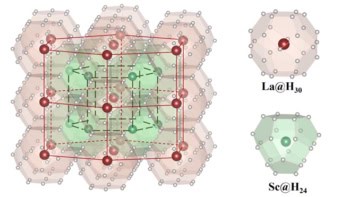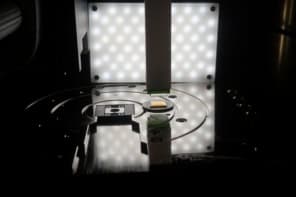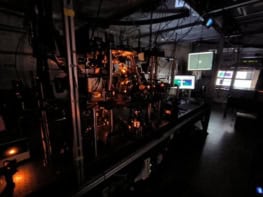Boron - one of the lightest elements in the periodic table - becomes a superconductor when it is squeezed, according to a team led by Russell Hemley of the Carnegie Institute of Washington in the US. They found that boron loses its resistance to electrical current below 6 kelvin and at a pressure of 160 gigapascals. Now theorists must explain why the 'transition temperature' of boron rises as the pressure increases, in contrast with other metals (M I Eremets et al 2001 Science 293 272).
Hemley and colleagues attached platinum electrodes to a flake of boron around 40 microns across and 2 microns thick. The flake was then sandwiched between two diamonds, which compressed the boron until it became metallic. Boron is a non-metallic semiconductor under normal conditions, but its resistance falls and it becomes completely metallic when compressed to 175 gigapascals at room temperature.
Next, the team cooled the metallic boron and measured its conductivity for a range of pressures. At 160 gigapascals, they found that boron is a superconductor up to 6 kelvin. At 250 gigapascals, it exhibited superconductivity up to 11 kelvin – the first time that conductivity has been measured under such high pressures.
This makes boron unusual: in other metals, this transition temperature – the temperature below which superconductivity takes place – falls with increasing pressure. According to the Bardeen-Cooper-Schreiffer theory of superconductivity, vibrations of the crystal lattice – or ‘phonons’ – enable paired electrons to flow in some superconductors. Theorists previously thought that high pressure increased the frequency of these phonons, reducing their ability to aid electron flow. Hemley and colleagues speculate that this effect is outweighed in boron by other complex interactions within the crystal.
The underlying mechanism of boron’s superconductivity arises from its crystal structure under high pressure. Distinct steps were visible in the conductivity measurements as the pressure increased, which are known to correspond to shifts in the crystal structure. But although a boron crystal has the structure of an icosahedron – a polyhedron with twenty faces – under ambient conditions, Hemley and colleagues are unsure of its structure when it is highly compressed.
Interest in the superconducting properties of boron has been high since the discovery earlier this year of the metal superconductor magnesium diboride. Theory has also long predicted that compressed low-mass elements would support resistance-free current flow. Scientists even believe that hydrogen will become a superconductor under sufficiently high pressures.
“These experiments are very difficult”, Hemley told PhysicsWeb, “and it is a measure of the recent advances in high-pressure physics that we can now perform electrical conductivity measurements under these conditions”.



